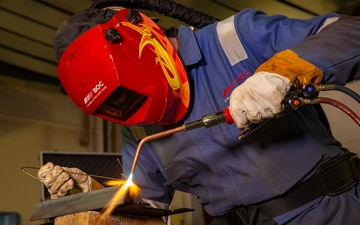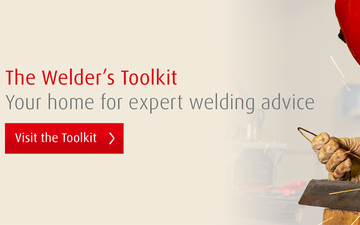- Official BOC UK Online | Industrial Gases | Products & Solutions | BOConline UK
-
Shop
- Industries
- Processes
- Gases & Equipment
-
Solutions
-
Services
-
Health & Safety
-
Contact & Support
- What's Happening
-
Net Zero Strategies
Your Quick Guide to Using Acetylene
Posted by BOC

For over a hundred years, acetylene has built its reputation for being strong, versatile and simple to use – the Swiss Army Knife of fuel gases.
So, what’s so special about this superstar of a gas?
Acetylene’s strengths
Well, first it burns hot. Very hot. Combine acetylene with oxygen, and it creates a flame temperature of approx. 3150 C. This, together with its low moisture levels and lack of oxidation, makes it highly suitable for welding high-strength materials such as steel. It’s also ideal for rapid metal preheating and cutting. Yet, paradoxically, when you use acetylene, the precisely concentrated heat distribution reduces distortion and potential thermal damage to the metal being cut, an impressive bonus considering the heat acetylene operates at.
In addition, only acetylene can produce the flame temperature and output to melt and weld steel with a neutral setting, which is critical when welding steel in particular, to avoid undesirable reactions in the molten pool.
Then there’s the versatility. Just change the attachment on your torch and you can switch from welding to cutting or pre-heating metal in a matter of minutes, without having to change gases, ideal for smaller businesses running on a restricted budget. And it can remove rust and make paint and coatings bond better to metal.
Using acetylene – some do’s and don’ts
- acetylene is lighter than air, so only use in well ventilated areas; any leaking acetylene then floats upwards and generally dissipates safely in the atmosphere rather than sinking and gathering in low lying areas
- always use and transport your acetylene cylinder in an upright position
- if the cylinder has been horizontal, keep it upright for 12 hours before use, or as long as it was previously on its side
- never roll a cylinder across the ground; use a cylinder trolley
- only use the appropriate regulators and hoses for acetylene and never used damaged equipment
- keep cylinders away from sources of heat
Acetylene and safety
In addition to our ‘do’s and don’ts’, BOC publishes a list of Acetylene Good Practices which include the following advice:
- Ensure the cylinder shut-off valve is closed before transport and during storage. Never rely on gas equipment such as torches or regulators to shut off the gas.
- Transport cylinders in a suitably ventilated vehicle, ideally an open or flatbed truck or a ventilated gas compartment in an enclosed truck.
- Cylinders must be properly restrained and valves protected during transport.
Are you missing out on the benefits of acetylene?
Visit BOConlineshop.co.uk to discover more about our acetylene range or place an order.

